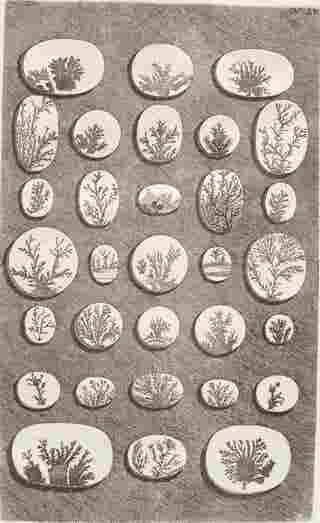Elizabeth Gould
Elizabeth Coxen was born to a middle class family in Ramsgate, England on July 18, 1804. Her formal education allowed her to earn a living as a governess, teaching Latin, French, and music. Her life was “wretchedly dull” when, according to legend, she met John Gould in the Aviary of the Zoological Society. Finding themselves to be kindred spirits, they married when she was 24. John, like his father before him, first worked as a gardener and learned taxidermy in order to create garden displays. Through skill and luck, and by the force of his personality, he became the Animal Preserver to the British Museum, and Ornithology Superintendent to the Zoological Society. In an era dominated by the work of naturalists John James Audubon and Charles Darwin, the Goulds began to raise a family and embarked on their celebrated publishing venture.
On October 7, 1829, Elizabeth gave birth to their first child, John, who died in infancy. In the meantime she was working on the drawings for A Century of Birds of the Himalaya Mountains. The first of twenty parts in the series was published on December 20, 1830, and the following day Elizabeth gave birth to her second child, John Henry. The following year, the naturalist Nicholas Vigors would name a species to honor “the accomplished artist, Mrs. Gould.”
During work on the next part of A Century of Birds, Elizabeth suffered from another difficult pregnancy and the death of her third child. Edward Lear, the nineteen-year-old bird artist, later famous for his nonsense verse, was working for the Zoological Society when John Gould approached him for temporary assistance. Under Lear’s influence, Elizabeth’s technique quickly advanced with added depth, motion, character, and improved composition. Soon after the publication of the Gould’s first ornithological images, she became internationally known for producing works of great beauty and accuracy, even receiving grudging words of admiration from John James Audubon.
John Gould contributed sketches to the joint endeavor, but his true aptitude was as a producer: overseeing the production from beginning to end, identifying birds with rough drawings, conceptualizing and correcting the renderings, as well as paying for the publication. Although he created the mystique of an artist around himself, it was Elizabeth who had the talent. Together they made a tremendous team. He delivered her from a life of tedium, into a life of adventure and a fulfilling career. She provided John with the skill he needed to establish his reputation and supported the charade of his artistry with the statement “Drawn from Nature & on Stone by J. & E. Gould.”
A Century of Birds of the Himalaya Mountains was followed by the production of a five volume series, Birds of Europe. An exceedingly busy time for Elizabeth, she produced about 300 plates, traveled to Europe with John to visit important natural history collections, and gave birth to her fourth, fifth, and sixth children, Charles, Eliza, and Louise.
Elizabeth’s greatest adventure began on May 16, 1838. Leaving all but her oldest child with her mother, she and John set sail for Australia. Over the next two years, Elizabeth made hundreds of drawings from specimens for the publications Birds of Australia and A Monograph of the Macropodidæ, or Family of Kangaroos, as well as fifty illustrations for the Ornithology volume of Charles Darwin’s Zoology of the Voyage of H. M. S. Beagle. She also accompanied John into the Australian bush, giving her a thrilling, first-hand glimpse of her subjects. In Tasmania she gave birth to their seventh child, Franklin Tasman.
In August of 1840, the Goulds arrived back in London, but Elizabeth never completed the lithographs of the birds and mammals she saw in Australia. She died of puerperal fever after the birth of the couple’s eighth child, Sarah. She was 37 years old. After her death, her drawings were prepared on stone by H. C. Richter, and at publication, her name was not noted in connection with these works. Although grieved at the loss of his partner of twelve years, the enterprising John Gould continued production of his bird books, beautifully illustrated by a series of artists including H. C. Richter, Edward Lear, Joseph Wolf and William Hart.

